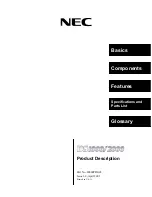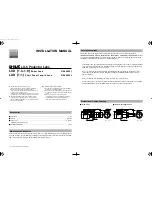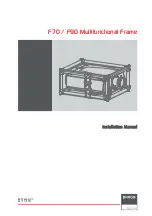
D-7
Rev 2.2, 10/31/94
Limiter
A special type of
compressor
which prevents the signal from exceeding a certain preset level
(
threshold
), no matter what the input signal level may be. Limiters are sometimes used for special effects
in popular recordings, especially vocals. A vocal with limiting will be essentially at the same level
regardless of the effort put out by the singer, from a soft voice to a shout. The shouting will sound
subjectively louder, however, because of the increased harmonic content of the sound. The
dynamic range
of a singer at a close range to a microphone is far greater than that of any instrument or musical
ensemble, and when recording a vocal with an ensemble without limiting, a great deal of gain riding
must be done to maintain musical balance.
Limiters are sometimes used in front of power amplifiers in sound reinforcement systems or radio
transmitters to prevent unexpected high-level signals from causing overloading and large amounts of
distortion. (TAD)
Lowpass Filter
A filter which uniformly passes frequencies below a certain frequency called the cutoff
frequency. Usually this is defined as the frequency where the amplitude response of the filter is 3
decibels below its nominal value.
Many early tone controls were variable lowpass filters. (TAD)
MIDI
The Musical Instrument Digital Interface (MIDI) is a standard communications interface for use
between electronic music synthesizers of various manufacture. (TAD)
MIDI is also used for controlling other peripheral devices, both musical and not. Besides synthesizers,
audio signal processors (like the
601
), electronic drums, and lighting controllers are now MIDI-
controlled.
Noise Gate
See Gate.
Overload
An overload is said to occur when the input signal level in an audio device is so large
that it drives the device out of its linear range and into
distortion
or
clipping
. Overload may be
continuous or may occur only on short peaks in musical waveforms. The latter condition is common with
certain waveforms, such as sharp percussive sounds which have a peak value much greater than their
average value. This "peak clipping," as it is called, must be avoided for true high-fidelity recording and
reproduction, although a small amount of it may be quite difficult to hear in practice. (TAD)
Oversampling
In some
digital
audio components, the sampling frequency (44.1 kHz for compact discs)
is raised to a multiple of that frequency. For example, if the sampling frequency were raised by a factor of
4, three artificial samples must be created in between each pair of original samples. These samples are
zero in level, and they do not change the information content of the original samples. Digital filtering is
then used for interpolation of the zero samples to values intermediate between the true sampled values.
But because the sampling rate is now so much higher, a very gentle
anti-aliasing filter
can be used rather
than the
brickwall filter
usually needed, resulting in much less phase distortion.
See also:
sampling rate
.
(TAD)
Pan (panpot)
Short for panoramic potentiometer, which is two connected volume controls with a
common knob so wired that as one is turned "up," the other is turned "down." If the stereo channels are
controlled by a panpot, the apparent position of the sound will move from left to right as the control is
turned. The balance control on most stereo amplifiers is actually a simple panpot.
Panpots are used in recording to place the apparent position of a sound, such as a soloist or other
instrument, anywhere between the two loudspeakers. Its operation relies on the ability of our ears to
localize a sound by level differences heard by our two ears. For a panpot to work properly, it must follow
an accurately prescribed attenuation curve. In many recordings, several instruments are given separate
positions by using a panpot on each one when the final "mix" is made. (TAD)
Parametric Equalizer
An
equalizer
allowing control of center frequency, bandwidth, and boost/cut.
See
also:
shelving equalizer, peak/dip equalizer
.
Peak/Dip Equalizer
An equalizer capable of providing a bandpass peak or dip (as differentiated from
shelving
) in its frequency response. Peak/dip equalizers are available in many forms, ranging from the
program equalizers found on many mixing consoles, to graphic or
parametric
equalizers.
Phantom Power Condenser microphone
s require a preamplifier to be close by due to the extremely high
impedance of the microphone itself. This preamplifier is in the housing of the microphone, and it needs a
power source. Sometimes a battery is used, but more often a multi-wire cable brings the audio signal
from the microphone and brings the power from an external power supply to the preamp. This is a rather
Summary of Contents for 601
Page 46: ...4 18 Rev 2 2 10 31 94 This page is blank believe it or not ...
Page 48: ...4 20 Rev 2 2 10 31 94 Notes ...
Page 50: ...5 2 Rev 2 2 10 31 94 Notes ...
Page 70: ...7 16 Rev 2 2 10 31 94 Notes ...
Page 72: ...8 2 Rev 2 2 10 31 94 Notes ...
Page 74: ...9 2 Rev 2 2 10 31 94 Notes ...
Page 78: ...11 2 Rev 2 2 10 31 94 Notes ...
Page 126: ...D 12 Rev 2 2 10 31 94 Notes ...
Page 138: ...G 8 Rev 2 2 10 31 94 Notes ...
















































